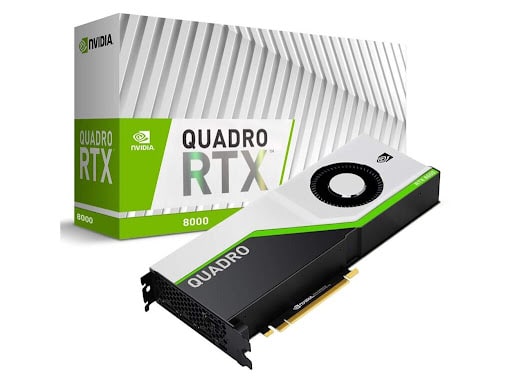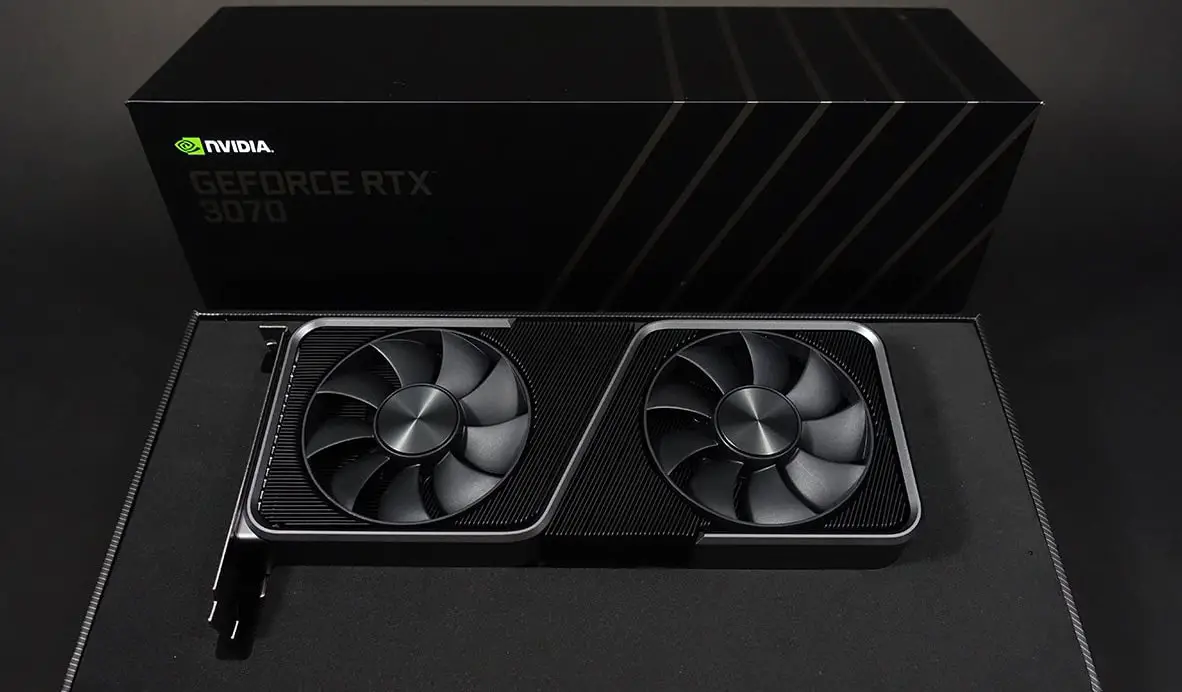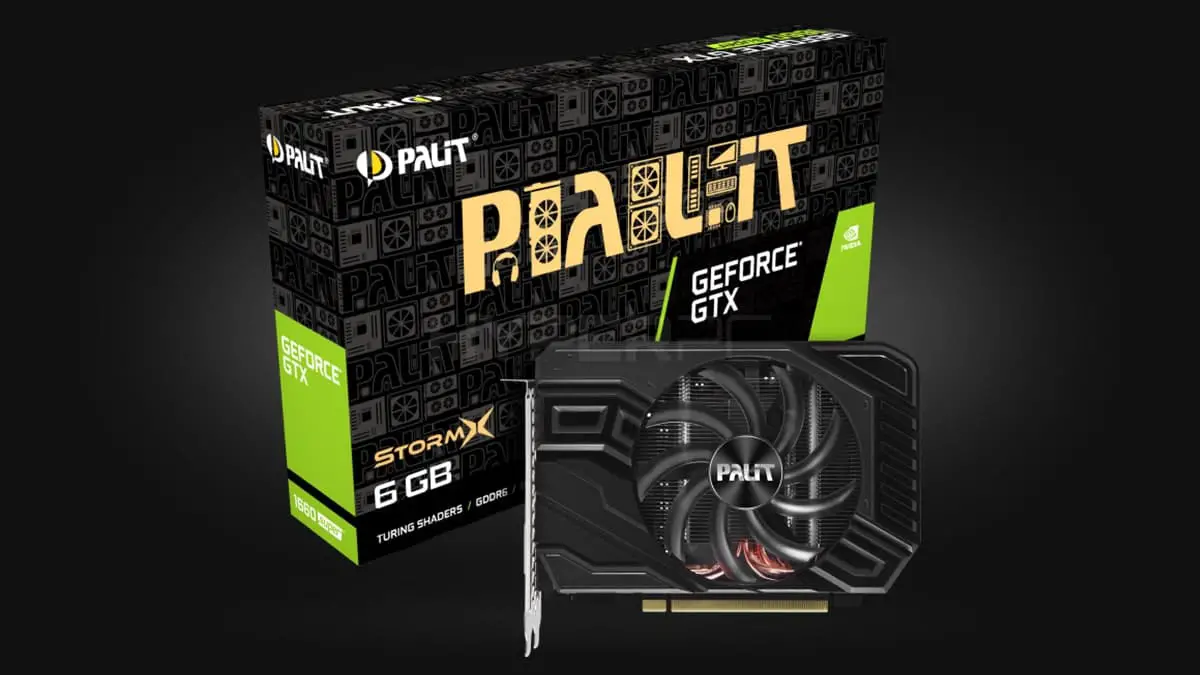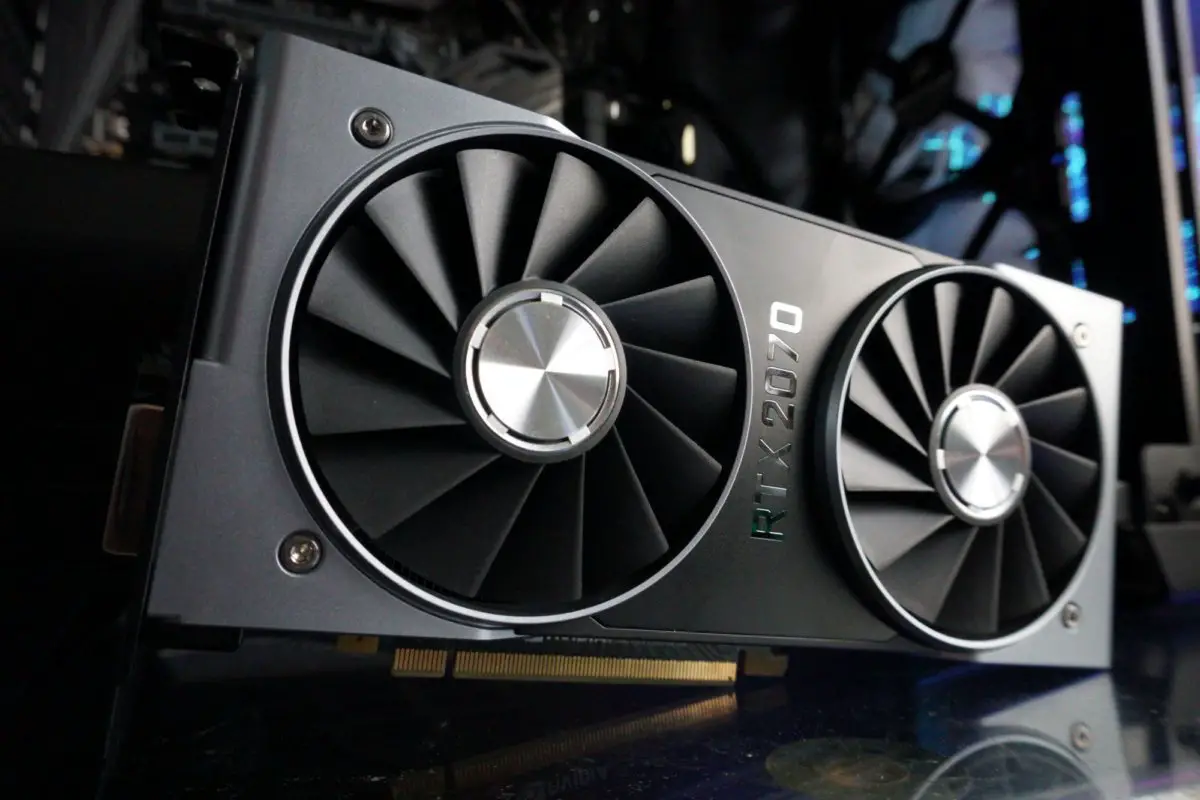V-Ray, Redshift, OctaneRender, Blender, LuxMark and Radeon ProRender
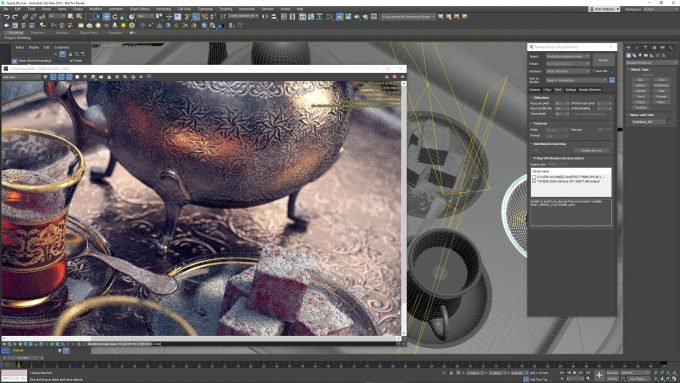
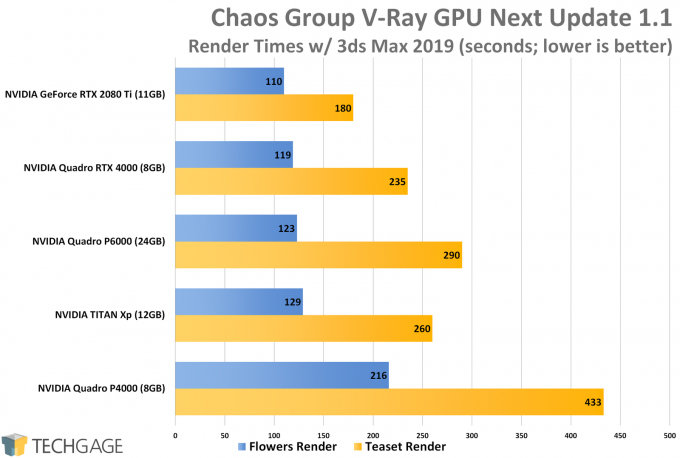
Since our V-Ray project is not intended for Radeon and Radeon Pro cards, we use this program to test only Quadro and GeForce video cards.
The NVIDIA Quadro RTX 4000 card is making giant strides over the P4000, cutting render times by almost half. I don’t think RT cores designed for ray tracing can be used in any way in traditional rendering, so this achievement should be attributed solely to the new NVIDIA Turing architecture. As far as RTX is concerned, RT kernels can actually be used to solve noise reduction problems using machine learning algorithms, but this is currently only used in interactive design, not in finite element rendering.
That the RTX 4000 is faster than the P4000 is not surprising, but another thing is interesting: the RTX 4000 also outperforms the top-end graphics card of the previous generation, the Quadro P6000. The P6000 GPU has three times the video memory, which makes the RTX 4000’s progress in pure performance even more impressive. The RTX 2080 Ti result gives us some idea of what to expect from the Quadro RTX 6000.
Redshift
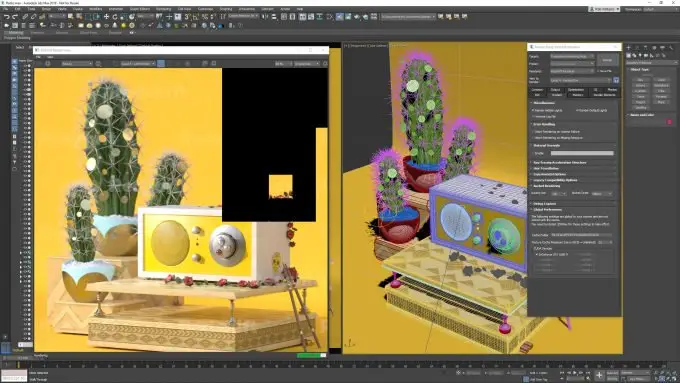
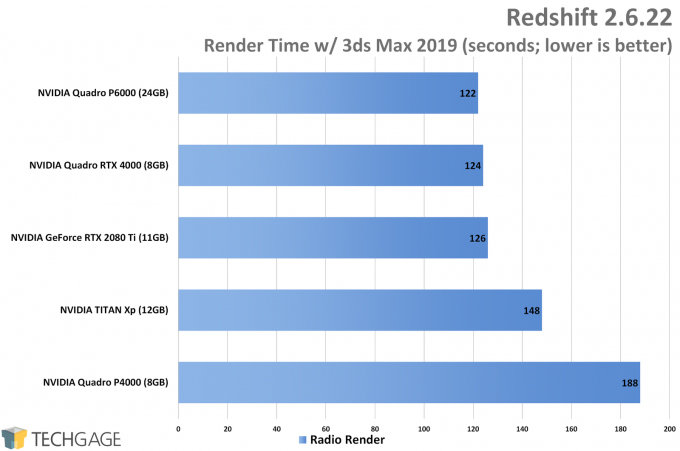
In V-Ray, the benefits of RTX graphics cards are brought to light thanks to the built-in noise reduction algorithm, which is not yet available in Redshift (built-in noise reduction support should appear in version 3.0). And, while the V-Ray results highlight the tremendous advantage of Turing maps over Pascal maps, in Redshift, this progress is not so obvious.
The RTX 4000 score is close to that of the RTX 2080 Ti, and we see this as a sign that our benchmark may not be delivering the workload needed to test these cards. However, the difference between these powerful cards and the previous generation titanium TITAN Xp is quite obvious. And in our main competition – RTX 4000 vs. P4000 – the new card demonstrates significantly higher speed.
Octane by OTOY
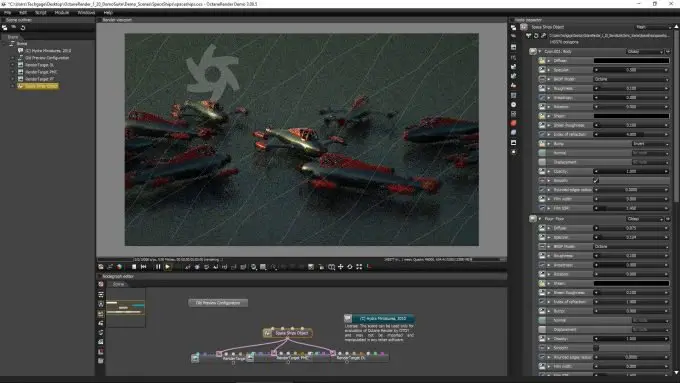
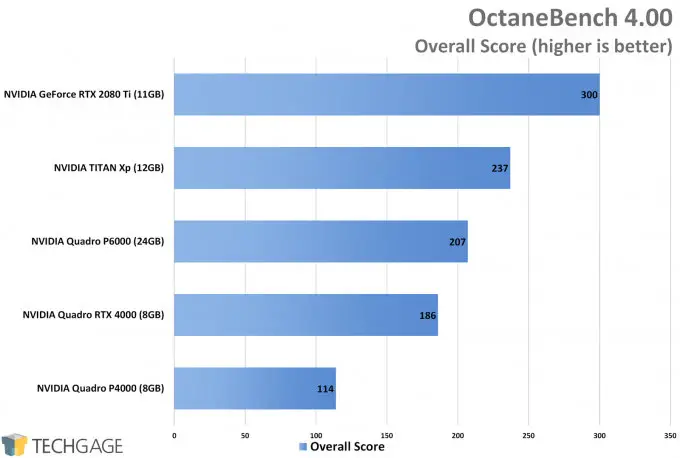
As with Redshift, there is no dedicated RTX support in the OTOY benchmarks yet. More precisely, it will appear in the Octane 2019 version, the release date of which has not yet been determined. And whenever that happens, this OTOY benchmark will determine the performance metrics of graphics cards in both RTX mode and “normal” mode. When it comes out and hits platforms that meet the appropriate system requirements, the results of the RTX-enabled Octane should show a significant acceleration in the rendering process.
But even in the absence of the RTX option, Turing graphics cards perform very well: the RTX 4000 is not far behind the previous generation P6000 top card and is significantly ahead of the P4000.
Blender
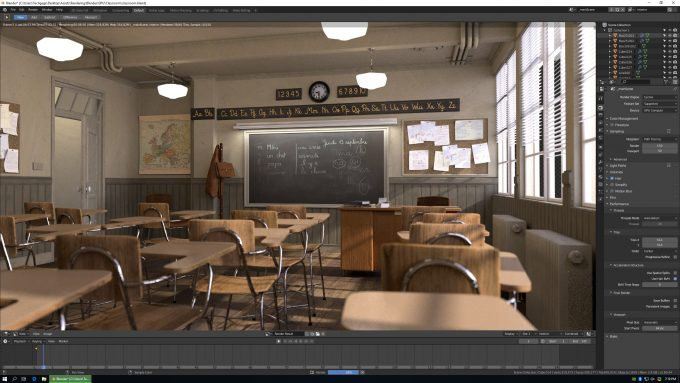
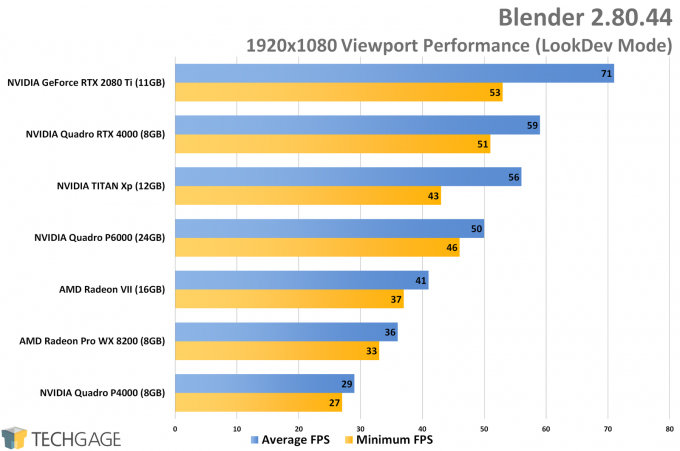
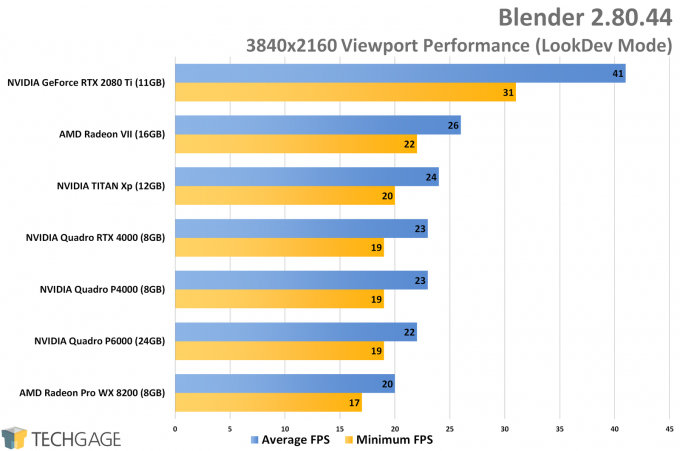
Unlike rendering, the rendering performance of modeling objects in Blender is qualitatively dependent on the resolution: when you switch to a higher resolution, it drops dramatically. At 1080p, the RTX 4000 does a good job, ranking second behind the 2080 Ti gaming card, which is packed with more CUDA cores (not to mention more VRAM). And that same speed was enough for the RTX 4000 to outperform the TITAN Xp.
And at 4K resolution, difficulties arose, and for all video cards: even the 2080 Ti showed a semi-acceptable level of performance. However, it should be noted here that the LookDev mode is not one of the frequently used ones, so the low frame rate should not scare anyone. If such performance was observed in the mode of wireframe or solid volumetric modeling of an object, then this would be a problem. But all video cards coped with these modes, that is, they were able to provide frame rates in the region of 60 FPS even at 4K resolution.
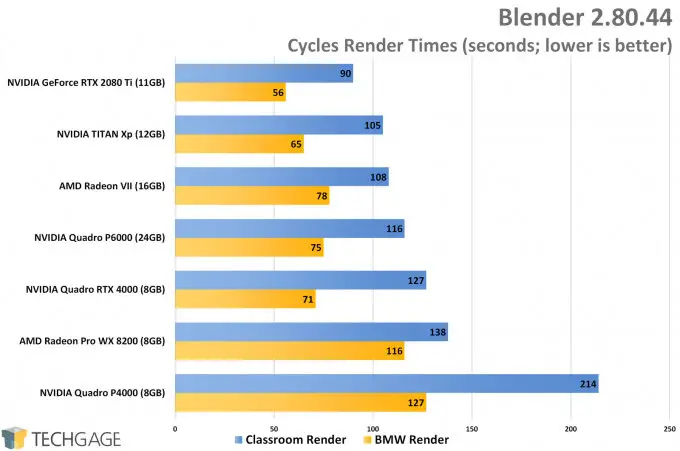
In rendering tasks, the more powerful the video card, the faster the result is achieved. Unsurprisingly, the 2080 Ti takes the top spot. And in general, the final distribution of results here exactly corresponds to that which could be assumed a priori, based only on the technical characteristics of video cards.
Once again, the RTX 4000 outperforms the previous generation P4000 by a very large margin.
LuxMark
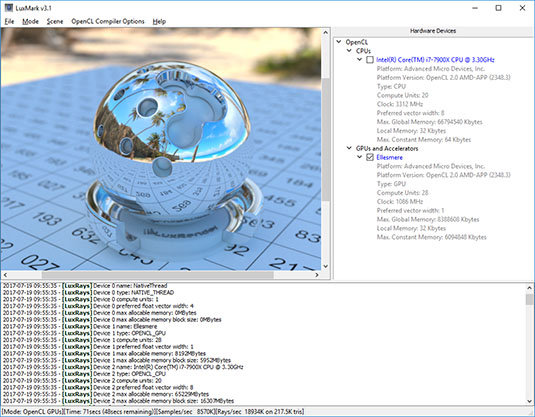
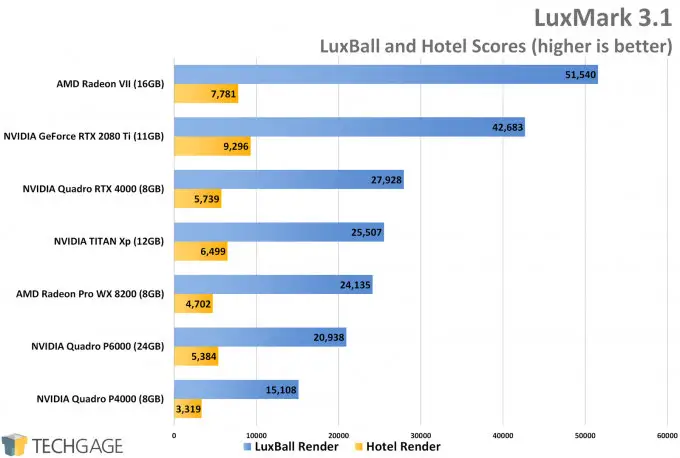
With the release of the Radeon VII card, AMD has announced performance increases specifically in LuxMark. It’s strange that this is rarely remembered, because the results obtained clearly explain why AMD advertised this test: VII takes first place here, although the championship is not absolute.
The 2080 Ti handled the more complex hotel scene better than the VII; this hints that the edge for a Radeon card is not guaranteed in all cases. This result is all the more interesting since AMD has already observed a similar alignment – when the Ryzen processors in KeyShot did an excellent job of rendering a car (a relatively simple object), but in rendering the scene with the interior they lagged noticeably behind Intel. Something in our interiors is not dancing with AMD processors.
Radeon ProRender
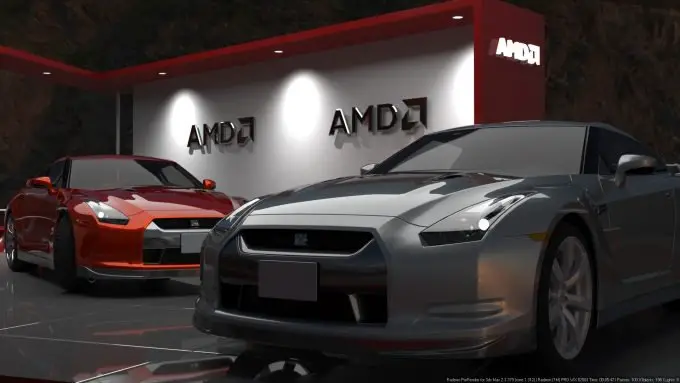
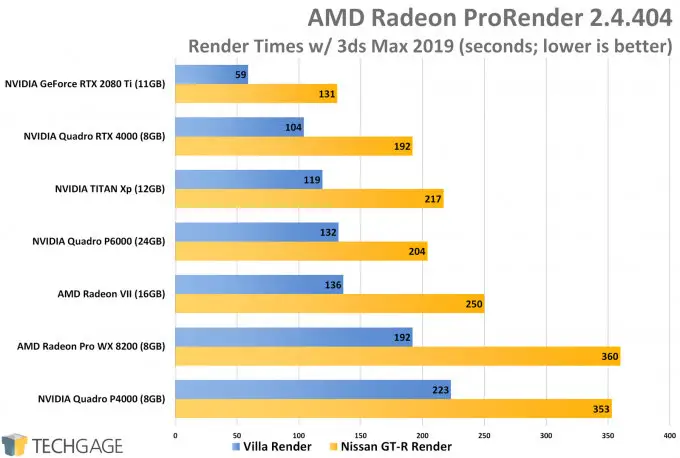
In Radeon ProRender, to the great regret of AMD, NVIDIA video cards demonstrated excellent results. Judging only by them, the Turing architecture provides an unconditional leadership in rendering: the RTX 4000 card turns out to be faster than the technically more powerful Radeon VII.
We do not want to say that based on these results, we should abandon AMD cards, since rendering performance is not everything. But if you plan on using interactive rendering, then you need the fastest graphics card possible – as far as your budget allows.




